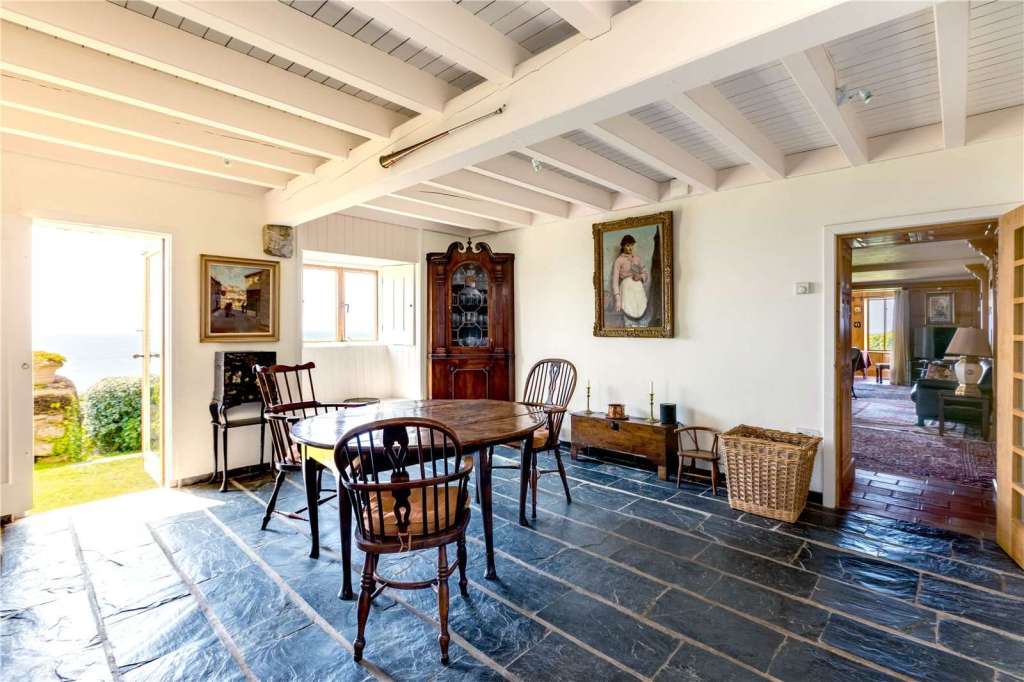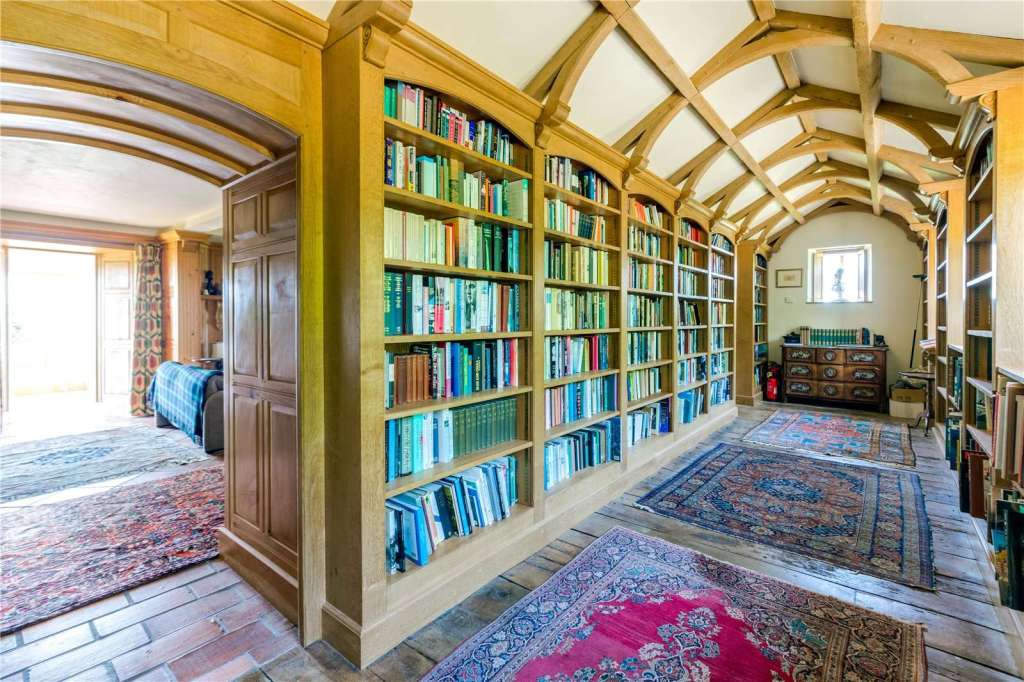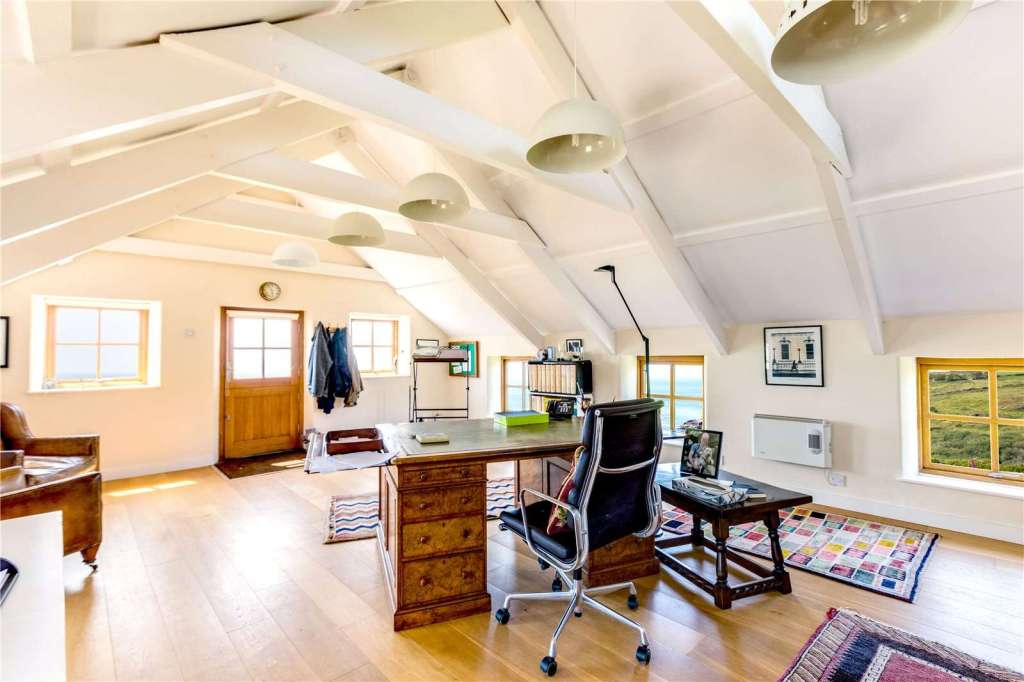Every writer needs a bolt hole. Novelist John le Carré’s was particularly picturesque, perched high above the waves on one of south Cornwall’s most glorious coastal stretches, between Lamorna and Porthcurno.
Tregiffian Cottage, made up of a trio of former fishermen’s homes, was where Le Carré conceived and wrote some of his most famous novels, including Tinker Tailor Soldier Spy, Smiley’s People, The Spy Who Came in from the Cold and The Constant Gardener.
‘I love it here, particularly out of season,’ Le Carré, real name David Cornwell, who died in 2020, told a local newspaper. ‘The empty landscape, walking on the cliff, and the light, which of course everyone always mentions… but it seems that I can think well here. I can populate the empty landscape with my imagination.’
Le Carré first saw the huddle of cottages on a walk with his friend, Cornish landscape artist John Miller, in the late 1960s. Miller pointed it out to him, suggested he buy it, and the writer approached the farmer on the same day, settling on a reported purchase price of £9,000 for the 3.3 acre property.

With scene-stealing views to the Isles of Scilly and direct access to the South West Coast Path, it turned out to be a sound investment. Tregiffian Cottage was the writer’s long-term home but has now been put on the market by the family for £3 million.
Le Carré, it seems, was also a dab hand at property renovation. He and his second wife, editor Valerie Jane Eustace, restored the cottages together, uniting the three into a single, 5,000-plus sq ft home for themselves and the four sons they had between them. They created four bedrooms (three ensuite), which includes a self-contained guest wing, plus a library with bespoke bookcases and a feature window at one end, glazed with what is believed to be part of the canopy from a second world war fighter plane. They also added a conservatory from where you can sit and watch the sweeping sea views.
They also renovated a range of outbuildings in the grounds, which contain a kitchen garden and greenhouses and are beautifully landscaped to make the most of the coastal setting. There are office quarters, an indoor swimming pool, gardener store and a workshop.

Crucially, Tregiffian was a creative sanctuary. Le Carré wrote the first of his novels, Call for the Dead, in 1961, while commuting from his home in Buckinghamshire to London where he briefly worked for MI5. But he used his Cornish retreat for nearly all his writing from 1970 onwards.
His fourth son, the writer Nicholas Cornwell, who goes by Nick Harkaway as his own nom de plume for novels including The Gone-Away World, Angelmaker and Tigerman, and who grew up at Tregiffian, tells The Spectator of his father’s disciplined work ethic. ‘In general, he had a rhythm,’ he says. ‘He woke early and had a quick breakfast in the kitchen, then went to his office – at various times what is now the living room, the lower east end of the house, and then the room above it… everywhere had its moment until the studio space in the outbuilding was created and became the firm favourite.
‘He needed quiet, regularity, and contemplation. I used to think his office door was closed to keep me out, but recently I realised it was at least as much to keep him in. He could easily get caught up making paper aeroplanes with me all day when I was a kid. So he was disciplined but distractable.’
His father’s gritty writing, often focusing on the political and human ambiguities of the Cold War, lent itself perfectly to star-studded small and big-screen adaptations. George Smiley was played memorably first by Alec Guinness in BBC TV’s 1979 adaption of 1974 novel Tinker Tailor Soldier Spy, and later to great acclaim by Gary Oldman in a film version in 2011. Oscar-winning Rachel Weisz and Ralph Fiennes dazzled in The Constant Gardener; more recently, Tom Hiddleston, Hugh Laurie and Olivia Colman thrilled in the glamour-soaked Night Manager, with Le Carré making a Hitchcock-style cameo as an offended restaurant guest.
Cornwall remembers an idyllic childhood at Tregiffian, a home filled with an eclectic art collection with pieces by members of the Newlyn School alongside works by German-born Karl Weschke, who came to England as a prisoner of war in 1945. ‘Furniture tended to be classic modern, often Italian,’ Cornwell says, ‘except in the kitchen and dining area, which was always and exclusively antique wood.’

His earliest memories, however, are of playing in the garden with his three half-brothers, Simon, Stephen and Timothy, and adventuring along the coastal path to St Loy or Mousehole. ‘The whole place is alive with butterflies, rabbits, swallows, foxes and occasionally badgers,’ he says. ‘In winter, you bank up a log fire and listen to the wind around the house and feel as if you’re in a castle or a lighthouse. The storms are dramatic and beautiful and when they’re gone you get that wild horizontal sun. It’s a wonderful place to rest, or work, or just be yourself.’
Cornwell says his mother – who died shortly after her husband – loved the clear, gentle air around Tregiffian, and remembers her most recently as laughing in the kitchen over lunch. It means, of course, that selling the home brings up a complex set of emotions for all the brothers.
‘We love the house, but it needs to be lived in,’ says Cornwell, simply. ‘It’s not a holiday home, it’s one of those places you put down roots. At the moment, there’s just no one in the family who can do that – and for me personally, it’s also an emotional rollercoaster just walking through the corridors. I see my parents at every corner. I want someone to make it entirely their own, not an echo, but a new place which will ultimately be something as defining and wonderful for them as it was for me.’
His own relationship with the rugged West Country is, however, an eternal one. He was born in Truro, in the hospital in which his father eventually died. Will he looking to set up another home here at some point? ‘Cornwall’s in me even if I’m not in it,’ he says. ‘But it would have to be somewhere different, and new – a story that’s mine to write.’
01872 243200, savills.co.uk







Comments